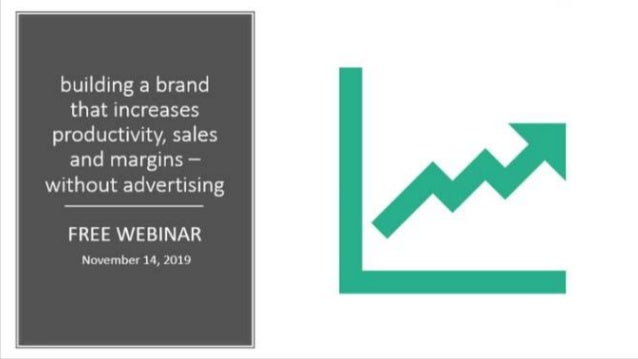
Building a brand that increases productivity, sales and margins - without advertising - JULY 01 2019.pptx
- 1. building a brand that increases productivity, sales and margins - without advertising D. John Carlson 26 September 2019
- 3. •psychology, education and business •consumer behaviour management •company director and strategic advisor •private and public sectors over 25 years
- 4. building a brand that increases productivity, sales and margins - without advertising
- 5. Brand and branding are tools of marketing
- 6. Marketing is the management of human behaviour with the express purpose of achieving social and/or commercial outcomes
- 7. first time last time more often less often
- 8. The application of social psychology tools in commerce
- 9. Brand is the tool for adding value and therefore driving sales, margins, productivity and performance
- 10. Attracts the best staff Retains the best staff Maximises the value of each staff member
- 11. Attracts the best customers Retains the best customers Maximises the value of each customer
- 12. Most organisations •should have just one brand •in reality have two brands
- 13. Actual Brand refers to what the target audience says person or organisation then they are not in the room Optimal brand refers to what a person or organisation would like the target audience to say when they are not in the room
- 14. Both are inevitably the synthesis of a range cognitive (objective) and emotional (subjective) data pertinent to a range of factors
- 15. Why –the person or organisation exists (purpose) How - the person or organisation delivers (method) What – the person or organisation is offering (product)
- 16. Mission – Why a person or organisation exists Vison – what a person or organisation what to create Values – what a person or organisation stands for Personality – what a person or organisation is like to deal with Capabilities – the skills a person or organisation offer Positioning – what sets a person or organisation apart
- 17. The principle source of this data is behaviour – and in particular the behaviour of staff within the organisation
- 20. Branding is the process of minimising the gap between the optimal brand and actual brand
- 21. Defining Living Communicating (initially through behaviour) Finetuning
- 22. None of – marketing – brand – branding – necessarily involves advertising
- 25. All of – marketing – brand – branding – necessarily involves culture
- 26. The key to cost effective marketing is maximising the lifetime value of each and every customer Conversion rates Average sale Margins Repeat purchase Referral None of which are impacted by advertising All of which are impacted by culture
- 27. Culture amounts to the beliefs and behaviours that determine how a company's employees and management interact and handle outside business transactions”. It is a system of shared assumptions, values, and beliefs which governs how people behave in organizations. These shared values have a strong influence on the people in the organization and dictate how they dress, act, and perform their jobs”. (Investopedia)
- 29. Became CEO of Zappos in 1999 when its turnover was – US$1.2 million Sold Zappos to Amazon in 2009 for US$1.6 billion
- 30. At Zappos, we really view culture as our No. 1 priority. We decided that if we get the culture right, most of the stuff, like building a brand around delivering the very best customer service, will just take care of itself."-- January 9th, 2010, The New York Times
- 31. Worked with the customer to identify the brand that they will engage with and respond to optimally Worked with staff to translate the brand into cultural attributes and behaviours Employed staff who would engage with those attributes and are capable of living the brand Ensured that all staff behaved in a way that reflected the brand in everything they did
- 33. After the brand is established within the organisation through the culture – it can be extended beyond the organization to the broader community – thus establishing the brand
- 36. a leader, followers and outsiders a shared vision, values and interests a means and frequency of communication targeted external communication leverage the community with permission
- 38. 61% of US corporations have or are developing a brand community – or online tribe recognising and engaging with their brand
- 42. Closing note I am NOT suggesting that advertising is not of value I am suggesting that advertising is not necessary to build a very powerful brand I will also suggest that once your brand lives – advertising costs will be much lower
- 43. action define the optimal brand create the culture that brings the brand to life close the gap between the optimal and actual focus on life time value maximise repeat business and referrals develop a brand community and a tribe to use it
- 44. November 21, 2019 Ba link after this webinar
- 46. I am more than happy to discuss any of the issues in this webinar with your personally johnc@lincintegrated.com 0402 273 350
- 48. thank you
